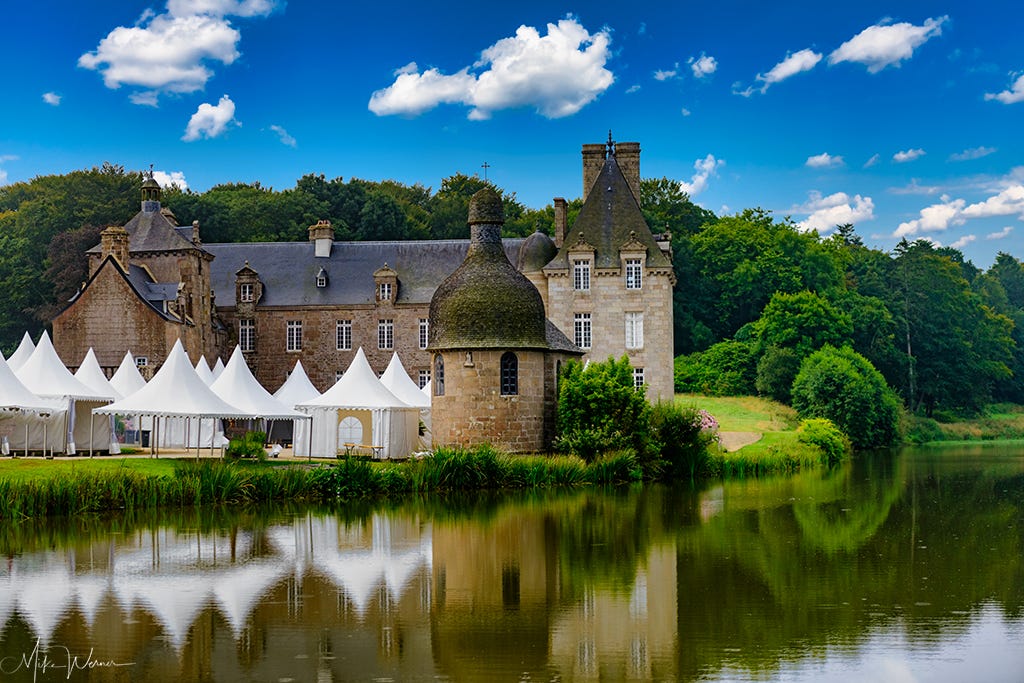The Château de Kerduel, located in Pleumeur-Bodou in the Côtes-d'Armor department of Brittany, is a historic structure that dates back to the 12th century. Built primarily as a fortified manor, its architecture reflects a transition from medieval defensive priorities to Renaissance-era comfort and refinement. Unlike many other castles from the same period, Kerduel does not feature the towering round keeps or massive defensive structures commonly associated with medieval fortresses, but instead, it stands as an elegant, fortified residence with a more subdued profile.
Click here to see where the castle is located on Google Maps.
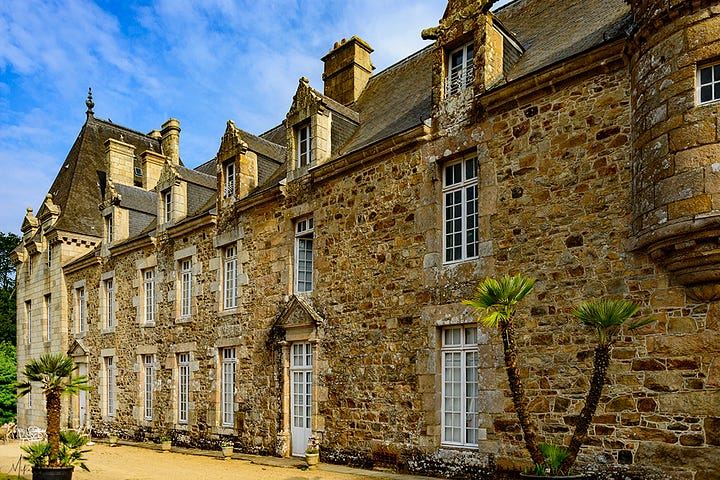

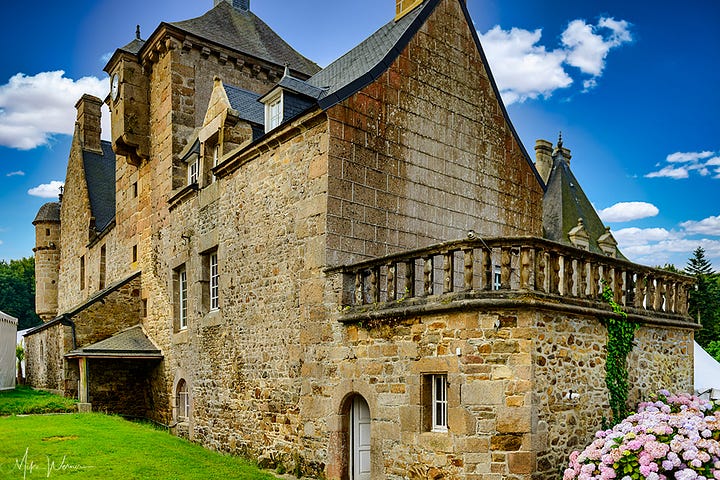
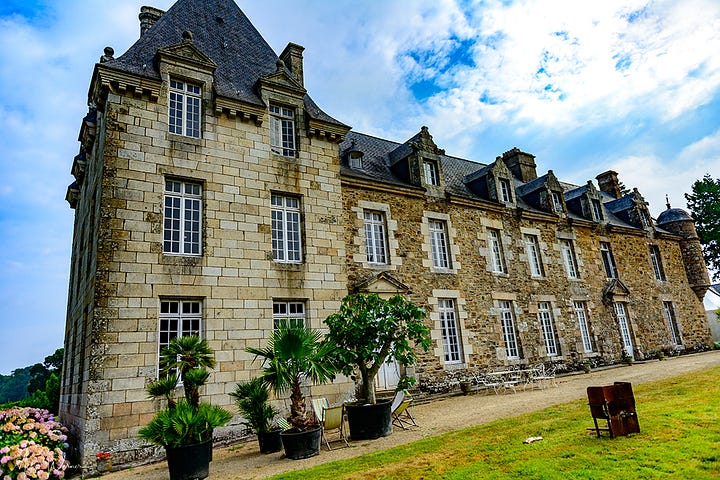
The castle's construction is characterized by a rectangular layout with wings that have been added or modified over the centuries. The main building is flanked by smaller towers or turrets, which do not dominate the overall structure, but rather blend into the castle’s stately design. The exterior is built from local granite, giving the château its solid, enduring appearance. The windows, enlarged in later renovations, provide a balance between defense and the desire for light and beauty, a hallmark of the transition toward more peaceful times.
Architecturally, Château de Kerduel is known for its simplicity and regional character rather than overwhelming grandeur. The defensive elements, such as battlements and arrow slits, remain a part of its original medieval design, but they are tempered by more elegant touches like stone mullions, larger doorways, and decorative carvings. The château’s slate roof and gabled design are also representative of Breton architecture during this period, blending form and function.
Historically, the Château de Kerduel has passed through the hands of several noble families, including the Kergariou family, who were influential in Brittany’s history. While the castle was designed as a fortified manor, its location in the peaceful countryside of Brittany spared it from the intense warfare that ravaged many similar structures. As a result, it evolved more as a noble residence, reflecting the prosperity and status of its owners.
The estate surrounding the château includes vast gardens and wooded areas, offering a picturesque landscape that complements the building’s rural charm. Over the centuries, the castle has seen various renovations, but its core design remains a testament to the architectural trends of Brittany during the late medieval and Renaissance periods.

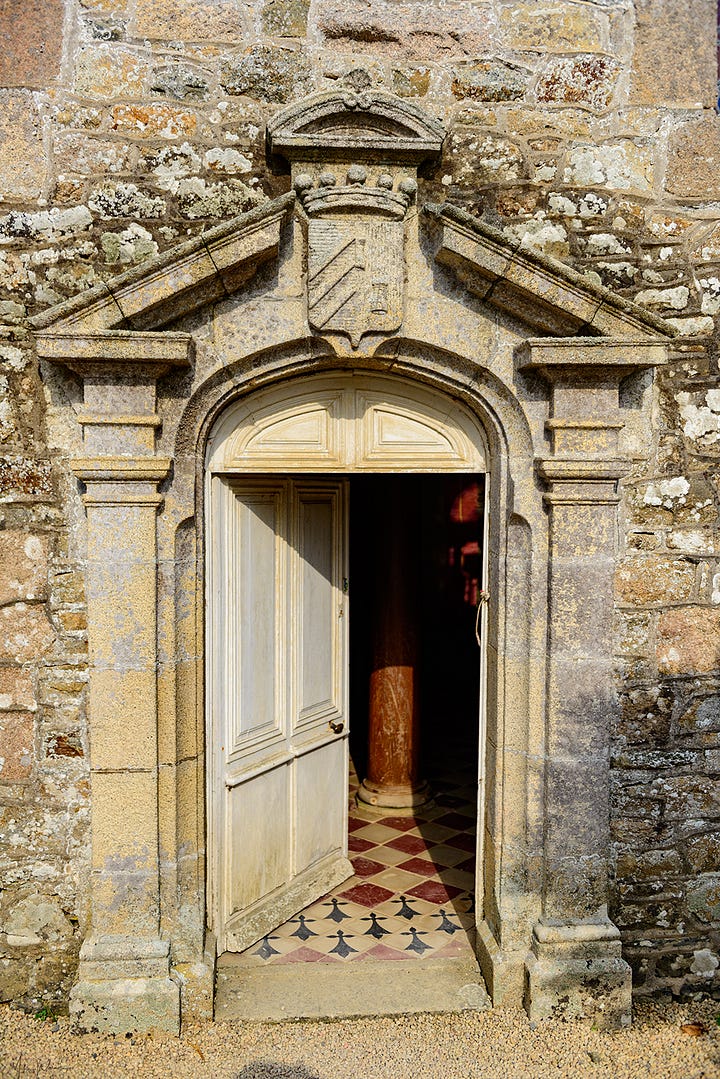
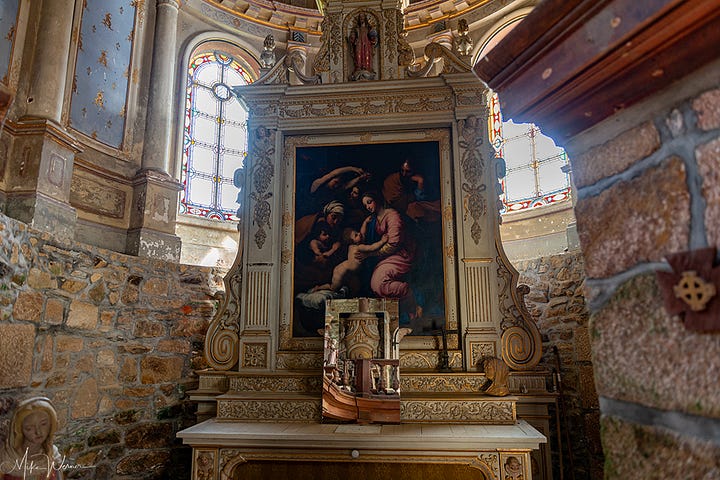

The chapel of the Château de Kerduel is one of the most intriguing aspects of the estate, offering a glimpse into the spiritual life and traditions of the noble families that once lived there. Like many castles and manors in France, the inclusion of a private chapel was typical, reflecting the deeply religious culture of the time. The chapel at Kerduel likely dates back to the same period as the château itself, with origins in the 15th or 16th century, and was primarily used for private worship by the family and their household.
Architecturally, the chapel is modest in size, reflecting its role as a private space rather than a large ecclesiastical building. The stone construction matches the rest of the château, with similar granite walls and a slate roof. Inside, it would have featured simple yet elegant décor, in line with the religious aesthetics of the time, with some decorative elements like carved stone details, a small altar, and possibly wooden beams supporting the roof.
Today, Château de Kerduel stands as a private residence, though parts of it are occasionally opened to the public for tours and events. It remains a symbol of Breton heritage, offering visitors and historians a glimpse into the region's aristocratic past without the overbearing grandeur of more famous castles. Instead, its appeal lies in its balance of defense and comfort, simplicity, and elegance, making it a distinctive part of the architectural and cultural history of Brittany.




